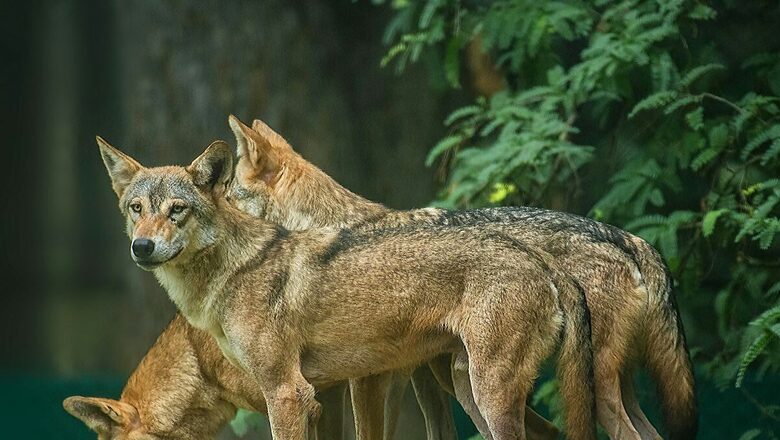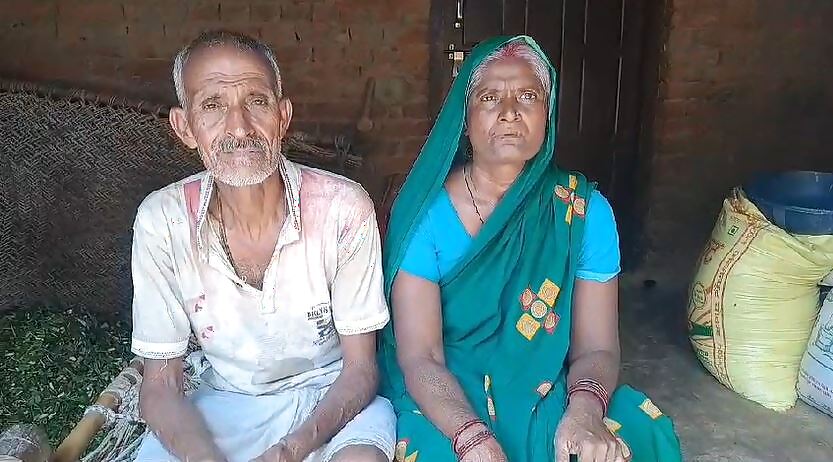
views
Wolf attacks in Uttar Pradesh are not a new phenomenon. The recent killings of 10 people, including nine children, in Bahraich serve as a grim reminder of the 1996 wolf attacks in Pratapgarh and neighbouring districts like Sultanpur and Jaunpur where more than 60 children were killed.
News18 delved into the 28-year-old tragedy, often referred to as a “haunted past” by locals, and spoke to the foresters who led the operation to eliminate the man-eater wolves as well as survivors who lived to tell their tales.
Though Tiwaripur Kala, a small hamlet in UP’s Pratapgarh, is 227 kilometres away from the wolf-infested Mahsi tehsil of Bahraich, the fear is visible among the residents. The village, one of the worst-hit during the 1996 attacks, said the incidents still haunt them. Many prefer to stay indoors and avoid venturing out alone after dark.
“Sahab, humein toh lagta hai yeh kuch pichhle janam ka paap raha hoga jo humein yeh din dekhna pada (It might be some bad deeds from a previous birth that brought about the wolf attacks). Those were the most horrific times we ever faced, when even children were not safe in their mother’s lap. More than 60 children were killed during that period,” said Kanhaiya Lal, an elderly resident of Tiwaripur Kala.

“Our village, along with others like Raniganj, Patti, Vishwanathganj, and even villages in neighbouring districts like Sultanpur and Jaunpur, were under constant threat. It wasn’t until the UP forest department stepped in that the wolf menace was finally neutralised,” added Lal.
Mukesh Yadav, 52, who hails from the same village and survived a terrifying wolf attack, recalled the night that changed his life. “I was 24 and sleeping in my field in the middle of the night when the wolf attacked me. It tried to grab my neck, but I managed to push the animal away before its canines could sink deep into my skin. To my shock, the wolf came at me again, this time seizing my thigh. I struggled to fend it off, but the wolf was relentless,” Yadav recounted.
Fortunately, a local villager spotted the animal and quickly raised an alarm. “The forest department team rushed to the site in no time and the wolf fled upon seeing them. I truly feel like I was given a second birth that night,” he said. “I’m thankful to the foresters who saved my life. Without them, I wouldn’t be here today.”
Forest Department Steps In
UP’s former wildlife warden of Prayagraj region, VK Singh, described the operation to trap the man-eater wolves in the 1990s as the most gruelling in the history of the state’s forest department. Singh said over 100 foresters were involved in the operation, which lasted around eight months and concluded in the woods of Jaunpur. During this time, approximately 42 children were killed, and the forest department managed to gun down around 13 man-eater wolves to finally end the menace.
The Operation
Singh explained that the operation to capture the wolves took place along the Sai river, which borders Jaunpur, Pratapgarh, and Sultanpur. Both wolves and jackals inhabited the fringes of villages in this area. But what led wolves to start targeting humans? “We believe such incidents often occur in search of easy food, especially when a female wolf is pregnant or has given birth,” said Singh.
During these times, the female wolf and her cubs cannot hunt, so the male wolf ventures out in search of food. Human children, being less likely to retaliate compared to other prey, become the easiest targets. Once a child is killed, the male wolf eats more than usual — double his normal capacity — returns to the den and vomits the partially digested food for the female wolf and the cubs.
“After consuming the human flesh, maybe accidentally or knowingly, the pack becomes accustomed to it and develops a preference, leading the wolves to continue hunting children. This dangerous cycle turns the wolves into persistent threats as they start seeing human children as their primary food source,” he added.
But how was it concluded that the wolves and not any other animal were attacking the children?
The UP government roped in researchers from the Wildlife Institute of India, Dehradun, to carry out an in-depth analysis of the killings. The researchers began with the calculation of the area and studied the minutest of details, including the landscape where the attacks took place, village hutment dispersion, proximity of crop fields or other cover, small domestic livestock availability and the number of vulnerable children encountered. Also, they interviewed the parents of the victims, eyewitnesses, survivors of attacks, forest officials and the medical officials that had conducted autopsies. The remains of children were also studied by the researchers for forensic clues.
The Findings
Officials with the forest department revealed that during their investigation, researchers discovered tracks at two different sites where bodies were recovered. These tracks were consistent with those of a wolf, not a feral dog or striped hyena. Crucially, hair found on the victims was scientifically analysed and identified as belonging to a wolf. Researchers also reported sighting a wolf near one of the attack sites, with no evidence of hyenas or leopards in the area.
Interviews with witnesses provided descriptions that matched a wolf, further corroborating the findings. The puncture wounds on the victims’ bodies also matched the spacing of a wolf’s canines, ruling out other predators like hyenas, leopards, or jackals. Additionally, the victims’ remains were found in the open, a characteristic of wolf attacks. Had it been a leopard, the bodies would have been hidden in thick cover. The fact that the remains were mostly intact and not scattered suggested a single wolf was responsible, not a pack. This led to the conclusion that a wolf was behind the attacks.
When Shoot-on-Sight Order Was Issued
Singh said during the operation, they collected around 42 mutilated bodies of children, which resulted in strong resentment among people. “On the order of the then chief wildlife warden Ashok Singh, sharp shooters of Dudhwa National Park, Jim Corbett and Rajaji National Park were deputed to stay at the site of wolf attacks,” he added.
Nailing Wolves No Cakewalk
Singh said unlike other wild animals, wolves are “very typical”. “They are swift and intelligent, making it difficult for shooters to get a clear shot,” he recalled. “We had to begin by studying their pattern of killing. We observed that after each attack, there would be a three-day gap before the next one, always in a different location. These incidents continued every three to four days, as wolves, like other carnivores, only eat when they’re hungry,” he added.
Singh, however, said tracking the wolves and understanding their behaviour was a daunting task, especially in an era without modern technology. “Back then, we had no internet, drones, or advanced communication tools like walkie-talkies, mobile phones, or WhatsApp to assist us. Neutralising the wolves was a tough nut to crack,” he added.
Despite the challenges, the team succeeded in killing around 13 wolves, which eventually brought an end to the human killings. “It was a difficult operation, but we managed to put a stop to the menace,” he recollected.
It has been around 28 years since then but the wolf attacks still haunt the people of Pratapgarh. Meanwhile, in Bahraich, the UP forest department and district administration have deployed more than 250 staffers, including 150 forest officials, and installed four traps apart from using three sets of thermal drone cameras to track the remaining wolves.




















Comments
0 comment